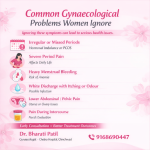Pterygium, often referred to as “surfer’s eye,” is a common eye condition characterized by a benign growth of tissue on the conjunctiva (the thin, clear tissue covering the white part of the eye). While non-cancerous, it can cause significant discomfort, aesthetic concerns, and, in severe cases, vision impairment. This guide provides a detailed understanding of pterygium, its symptoms, treatment options, and the transformative benefits of surgery.
What is Pterygium?
Pterygium appears as a fleshy, wedge-shaped growth that typically starts on the nasal side of the eye and extends toward the cornea. It is most often linked to prolonged exposure to UV light, wind, dust, and dry climates. Though it can occur in one or both eyes, it is more common in people who spend a lot of time outdoors.
Symptoms of Pterygium
Symptoms can range from mild to severe and may include:
- Redness and inflammation.
- Persistent irritation or a gritty feeling in the eye.
- Dryness due to tear film instability.
- Blurred or distorted vision if the growth encroaches on the cornea.
- Aesthetic concerns as the growth becomes more noticeable.
Causes and Risk Factors
The exact cause of pterygium remains unclear, but several factors contribute to its development, including:
- UV Exposure: Prolonged exposure to sunlight, particularly UV-A and UV-B rays.
- Environmental Irritants: Wind, dust, and sand are major triggers.
- Genetics: A family history of pterygium may increase susceptibility.
- Dry Eye Syndrome: Chronic dryness of the eyes can exacerbate symptoms.
When is Surgery Needed?
While mild pterygium can often be managed with lubricating eye drops or anti-inflammatory medications, surgery is recommended in the following scenarios:
- The growth progresses over the cornea, threatening vision.
- Persistent discomfort that does not improve with medical treatment.
- Significant cosmetic concerns impacting confidence.
- Recurring inflammation that disrupts daily activities.
What to Expect During Pterygium Surgery
Pterygium surgery is a relatively quick outpatient procedure performed under local anesthesia. The steps include:
- Removal of the Growth: The surgeon carefully excises the pterygium tissue.
- Conjunctival Autograft: A small piece of healthy conjunctival tissue, usually from the same eye, is grafted onto the affected area. This reduces the likelihood of recurrence.
- Suture or Glue Application: The graft is secured using fine sutures or tissue glue.
The entire procedure typically takes 30-60 minutes, depending on the severity of the case.
Benefits of Pterygium Surgery
- Improved Vision: Removal of the growth ensures no obstruction to sight.
- Enhanced Comfort: Say goodbye to irritation and redness.
- Cosmetic Improvement: Restores the eye’s natural appearance, boosting self-confidence.
- Long-Term Relief: Modern surgical techniques significantly reduce the risk of recurrence.
Recovery and Post-Surgical Care
Recovery from pterygium surgery is generally smooth, provided post-operative instructions are followed.
What to Expect After Surgery:
- Mild discomfort or a foreign body sensation in the eye.
- Redness and swelling, which subside within a week or two.
- Improved vision and eye comfort as healing progresses.
Tips for a Speedy Recovery:
- Follow Medication Guidelines: Use prescribed eye drops to prevent infection and reduce inflammation.
- Protect Your Eyes: Avoid exposure to dust, wind, and sunlight by wearing sunglasses.
- Avoid Rubbing Your Eyes: This can dislodge the graft and delay healing.
- Attend Follow-Up Appointments: Regular check-ups with your ophthalmologist ensure optimal recovery.
Potential Risks and Complications
As with any surgical procedure, pterygium surgery carries some risks, although complications are rare. These may include:
- Recurrence of the growth.
- Infection or inflammation.
- Graft displacement.
- Scarring or vision changes.
Choosing an experienced ophthalmologist, like Dr. Rachana Tiwari Patil at Chetna Multispeciality Hospital, minimizes these risks and ensures the best possible outcome.
Preventing Pterygium
Prevention plays a crucial role in managing pterygium, especially for individuals at high risk.
- Wear Sunglasses: Choose UV-protective eyewear when outdoors.
- Use Protective Gear: Goggles can shield your eyes from wind and dust.
- Keep Your Eyes Moisturized: Use artificial tears if you experience dry eyes.
- Limit Sun Exposure: Seek shade during peak sunlight hours.
Why Choose Dr. Rachana Tiwari Patil for Pterygium Surgery?
Dr. Rachana Tiwari Patil, a renowned Consultant Ophthalmologist and Phaco-Refractive Surgeon at Chetna Multispeciality Hospital, brings years of expertise to the table. She specializes in advanced pterygium surgery techniques, ensuring excellent cosmetic and functional results. Known for her patient-centric approach, Dr. Tiwari takes the time to address concerns and provide personalized care.
For Consultation Contact us on 9168690448
Website – www.chetnahospital.co.in
Address – Chetna Hospital, Sambhajinagar, MIDC, G Block, Near Rotary Club, Chinchwad 411019
.
.
.
#hospital#pune#pcmc#chinchwad#medical#medicalservices#dryeyetreatment#dryeyerelief#dryeyedisease#dryeyetherapy#catract#catractsurgery#catracteyesurgery#catracteyeoperation#eyedoctor#eye#glaucoma#conjunctivitis#ophthalmologist#eyediseases#eyepain#pinkeye#hazeleyes#myopia#eyeinfection#amblyopia#dryeyesyndrome#eyeproblems#motibindu#motibinduoperation













